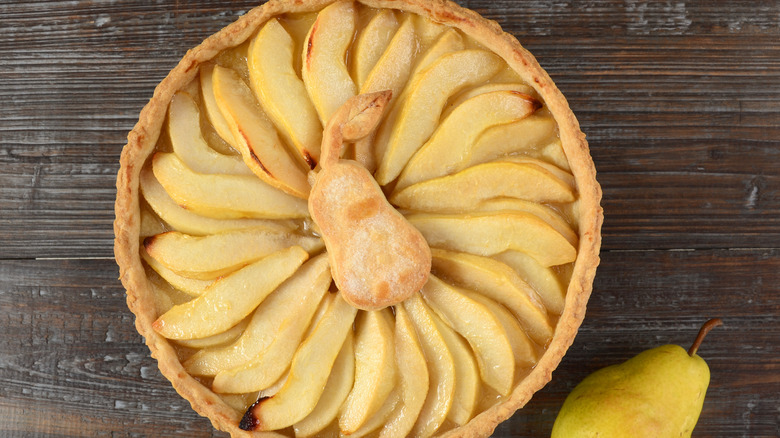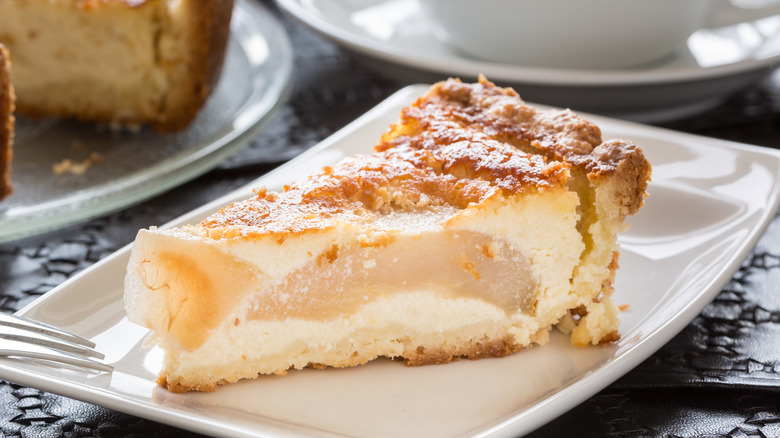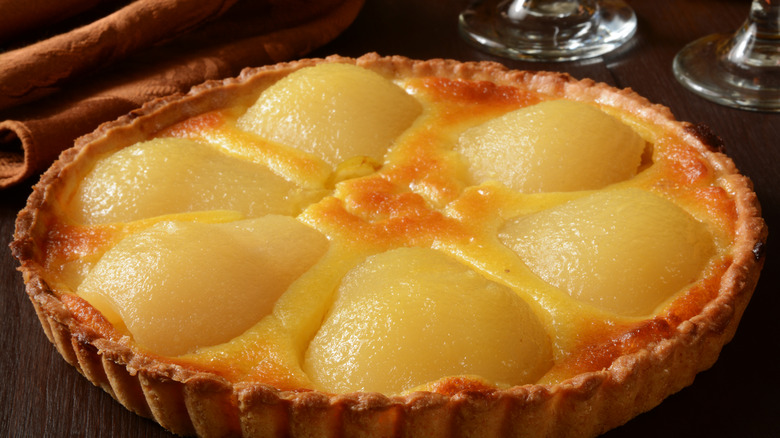Pears Are A Slept-On Ingredient For Outstanding Fruit Pies
While an apple a day might keep the doctor away, pears are the fruit pie ingredient that makes for a flavorful, texturally appealing slice that keeps people coming back time and again. With an elongated stem giving way to a bulbous bottom, pears might be the perfect baking fruit.
Although The Great British Baking Show has made bakers aware of the dreaded soggy bottom, a great fruit pie needs more than a well-executed crust. Fruit pies should contain distinguishable pieces of fruit surrounded by a viscous filling. Sometimes, when the fruit is exposed to heat, the crunch gives way to a more tender consistency.
While there are numerous pear varieties, many types keep their shape when exposed to heat, which is important for a fruit pie. Instead of turning into a mushy, muddled, sweet, sloppy filling, the pear pieces have a slight bite and texture. For example, Bosc pears, anjou pears, and even French butter pears have the structural integrity to keep their shape during baking.
From a beautifully braided crust to a crunchy crumble top, pears create a scrumptious filling for that fruit pie. It might be the golden pear baking tip to unwrap in the kitchen.
This pear variety makes for a visually impressive appearance
As the golden yellow hue transforms into a rich, radiant red, a pear's outer appearance is visually stunning. It might be one of the reasons why Homer referred to it as the "gift of the gods." More importantly, some pear varieties have another quality that makes them visually appealing: They do not oxidize quickly. Fruit oxidizes when the internal flesh is exposed to air, and the enzymes react. Although still edible, the brown or dark appearance makes it less visually appealing. People wrap the fruit tightly, use it quickly, or even add a squeeze of citrus to prevent discoloration.
Concorde pears do not oxidize as quickly. For fruit pies, the benefits are many. For example, the pears can be sliced earlier. Or, the pears can be carefully stacked on top for an intricate, circular pattern. Given that the fruit retains its glistening, pristine color, the visual impact is appealing. Although some bakers might use a dash of lemon juice to prevent browning, the additional flavor may not be wanted in the recipe. By using an ingredient that does not require any additives, the pear, spices, and other flavor notes can be more enjoyable.
Pears have many great flavor companions
While pears might be the star ingredient in a fruit pie, other flavors can make for enjoyable pairings. Certain fruits tend to have natural flavor companions. It is why apples and cinnamon work well together, or strawberry is often blended with banana in a smoothie. Mixologists have tested many combinations for drinks. While the ideas usually focus on beverages, the concept easily applies beyond the cocktail glass. The idea is to find pairings that enhance what makes a fruit enjoyable yet keep that primary ingredient as the star flavor.
With pears, some common pairings are warm spices like cinnamon and nutmeg. Even spicy ginger can stand up to the fruit. Thinking of additional ingredients in a pear pie, options like walnuts or pecans would add texture without overpowering the fruit. Even adding another fruit, like an apple for sweetness or cranberries for tartness, would be enjoyable.
Even though holiday carols sing of partridges in a pear tree, the enjoyment of pears in fruit pies should not be limited to just a few months a year. The pear-fection in the dessert is waiting to be enjoyed.


